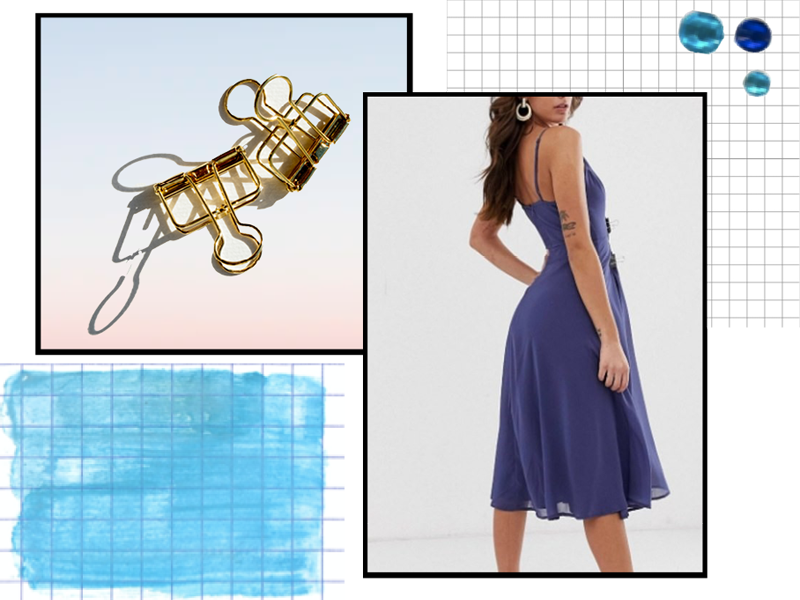When I was young, my mum dressed me and my sister in the same outfits. You can only imagine how excited I was when I reached the glorious age of 12, being old enough to head into the city with my friends and actually pick out clothes I liked and wanted to wear. This excitement for developing my own style and finding the perfect items to match has never faded, but when online shopping became the norm there was one issue. The models wearing the clothes never even remotely resembled what my body looked like, but still, they were modelling my size.
On Depop, skinny teens and twenty-somethings modelling an ‘oversized fit’ continued to haunt me
I’ve never been a size 6. Well, maybe in those awkward years when you were somewhere in between being a child and growing into a woman, but never since and I will never be. I wouldn’t have it any other way. Some brands try to diversify by including models with sizes ranging beyond the usually featured 4 – 8, but the majority of models are still at least 1/75m tall and very, very slim. As we all know by now, there are many issues with that surrounding body image and what it does to a young person’s self-esteem, or even an adult’s for that matter, to always be confronted with an image of beauty that doesn’t look like them in the slightest. But there’s more.
At the age of 12, I’d sometimes go to physical shops, but most of my clothes were already ordered – not online but via a good old catalogue. For our younger readers who might have missed this strange period: you would browse through a brand’s magazine which modelled their collection and then fill in the order form – by hand – with the product numbers of the items you wished to order. What I didn’t know at the time was that a lot of those slim, tall women who were featured in the catalogues and described as being ‘a size 6 and 1/78m tall’ were not wearing a size 6. They were modelling a size 12.
With online shopping coming into the picture, this issue only became more and more apparent. The small print underneath an image notifies you that actually, the tall skinny model is wearing a size 12. But then how does it seem to fit her so perfectly? I’m glad you asked. As these models are so tall, a small size would usually look strange: jeans designed as being floor-length would suddenly only make it halfway up their calves, and a long-sleeve top is transformed into a t-shirt. So, they wear a bigger size to match their long limbs. Of course, the clothes would then be far too big around the bust, waist and hips, so they’re tightly pinned to the body to make it seem like the perfect fit.
I’d order two sizes and felt guilty about contributing to packaging waste and delivery miles twice
Why is this an issue you may wonder? During the pandemic, shopping moved predominantly online for over a year and no one knows if it will ever go back to the way it was. Online shopping is always a bit of a gamble, that goes for everyone, but if your size is modelled on such a different body, there’s literally no way of knowing what you’ll end up with. I can’t even count the amount of times I’ve had to return an item because it didn’t fit me properly – but how was I supposed to tell? And this works both ways: if you’re actually tall and skinny you might be surprised to find out that maxi-dress you ordered will only fit you as a midi after all.
It has often led to me having to order two different sizes, knowing damn well I’d be returning at least one of them. This practice would usually be followed by a little guilt trip where I felt bad for contributing to packaging waste and delivery miles twice, especially when considering returns would often end up in landfill – but that’s a different story.
Once I started to be more environmentally conscious I turned to second hand and vintage, rather than fast fashion, to purchase new clothes when I needed them – or let’s be honest, when I grew bored of the clothes I had. It wasn’t long before I discovered Depop and started following small vintage shops on Instagram, where the issue of skinny teens and twenty-somethings modelling ‘a nice oversized fit’ continued to haunt me. I understand that with Depop your model options are limited to, well, you. But even here, items are often pinned to look like they properly fit the person wearing it.
So for all those out there for whom that oversized fit is actually their regular size, I would like to ask: can we have more truthful photos? It will save us all many trips to the post office and it will save the planet some harm from all those returns that could have easily been avoided.


One reply on “To reduce returns, stop modelling a size 12 on a size 6”
[…] Check out our piece on deceptive sizing in fashion catalogues […]